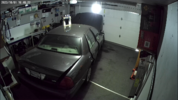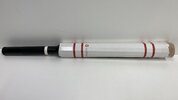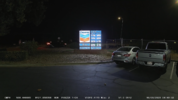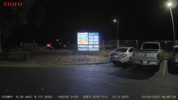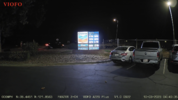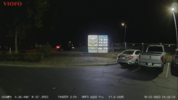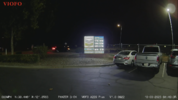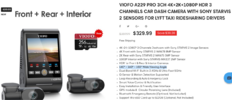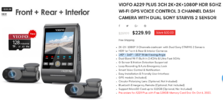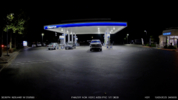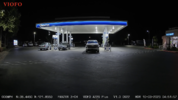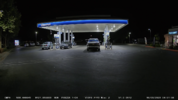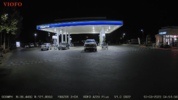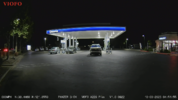HDR COMPARISON
This stationary HDR test is NOT the final judge of image quality.
Installing the dash cams in a moving car trying to resolve moving objects at speed is needed, and still requires independent peer review to confirm & verify.
I won’t be gathering “driving” test footage until we get an “acceptable” firmware fixing certain issues.
I’ve been testing / using the A139 Pro since November 2022, (11 months).
I’ve been testing / using the A119 Mini 2 since May 2023, (5 months).
The A139 Pro has the best overall DAYTIME image quality of any dash cam currently on the market.
The A119 Mini 2 has the best overall NIGHT TIME & LOW LIGHT image quality of any dash cam currently on the market.
If Viofo could somehow combine the A139 Pro, and A119 Mini 2 they would have the best image quality dash cam on the market DAYTIME & NIGHT TIME bar none.
The A229 Pro has the potential to be that camera, but it’s not quite there yet.
It has the hardware, but the software specifically the HDR tuning needs to be perfected to the same level of polish as the A119 Mini 2.
On with the games.
For this HDR comparison I place the camera test rig on top of my car 5ft high in the center of my 20ft x 20ft two car garage.
The test starts with a single light source illuminating the garage.
I have a Streamlight Stinger LED flashlight hanging from the ceiling with a diffuser 5ft behind the test rig in an attempt to evenly distribute the beam pattern.
The flashlight has 3 power modes HIGH/MED/LOW.
I use the LOW setting rated at 100 lumen for this test.
I let the cameras adjust / stabilize to the very dim conditions for approximately 10 seconds.
I turn on a second flashlight with an extremely tight focused beam pattern to maximize the intense difference between the darkest, and brightest part of the image.
The second flashlight is a MAGLITE ML300L.
The flashlight has 3 power modes HIGH/MED/LOW.
I use the HIGH setting rated at 625 lumen for this test.
I achieved the tightly focused beam pattern by constructing a telescopic shroud from USPS Assembly Grade Cardboard, (see attached photo).
Whether you're a professional using a flashlight for work or security, an outdoor enthusiast who takes it camping, or an occasional user wanting it for emergencies at home or on the road, our New ML300L D-cell LED is The Light For All Your Needs. With Eco mode, up to 298 Hours With the familiar...

maglite.com
Cameras on the rig;
A229 Pro 3-CH ..(IMX678) + (IMX675) + (IMX307)
A229 Plus 3-CH (IMX675) + (IMX675) + (IMX307)
A139 Pro 1-CH ..(IMX678)
A119 Mini 2 ……(IMX675)
Camera Settings;
Bitrate: …..Maximum
HDR: ……..On
IR LEDs: …Off
CPL Filter: Off
Camera Firmware;
A229 Pro Front: ..V1.0 0925
A229 Pro Rear: …V1.0 0901
A229 Plus Front: .V1.0 0922
A229 Plus Rear: ..V1.0 0901
A139 Pro: ………..V1.1 0629
A119 Mini 2: ……..V1.0 0912
After watching the recorded footage, and comparing screenshots side by side, 5 things stand out at me.
1.) The A229 Pro, and A139 Pro have similar HDR performance resolving the license plate.
Take note of the difference in size / shape / density of the beam pattern.
It’s almost like the cameras achieving the same goal but going about it in different ways.
Is this the difference in processors, (A229 Pro 96529 & A139 Pro 96687)?
Or a difference in firmware programming?
1a.) Everything not under direct illumination appears sharp, and focused on the A229 Pro, where as the A139 Pro looks blurry, an unfocused.
Take note of the 5 misspelled “VIOFO” paper signs.
Can you identify how each one is misspelled?
2.) The A229 Plus has a much brighter overall image than the A229 Pro.
However, the HDR performance is ineffective, and unacceptable trying to resolve the license plate.
This is a major malfunction that requires corrective action.
3.) The A229 Pro & A119 Mini 2 have similar brightness, and clarity of the overall image.
However, the A229 Pro is no match for the A119 Mini 2’s HDR performance at resolving the license plate.
Take note “California” in red lettering is missing from the A229 Pro, among the overexposure.
4.) The Rear cameras of the A229 Pro & A229 Plus have good overall brightness of the image.
However the HDR performance trying to resolve the license plate is absolutely non-functional.
This is a major malfunction that requires corrective action.
5.) The Interior cameras of the A229 Pro & A229 Plus have a dark overall appearance of the image.
However, the HDR performance resolving the license plate is far superior than the Front & Rear cameras of the A229 Pro & A229 Plus.
How does the “lowly” STARVIS 1 (IMX307) have better HDR performance than the STARVIS 2 (IMX678) & (IMX675) in the A229 Pro & A229 Plus?
Take note in the video footage when I turn on the flashlight.
It takes the Interior camera 3 seconds to adjust / react to the change in lighting conditions, and choose / select the appropriate exposure.
This is unacceptable, because all other Viofo HDR cameras accomplish this task in 1 second.
This requires corrective action.

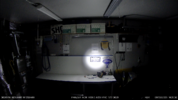

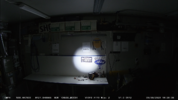

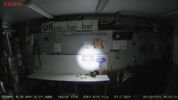
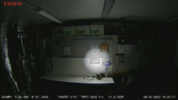
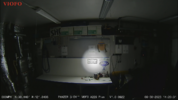
Here is the test footage I took the screenshots from.










